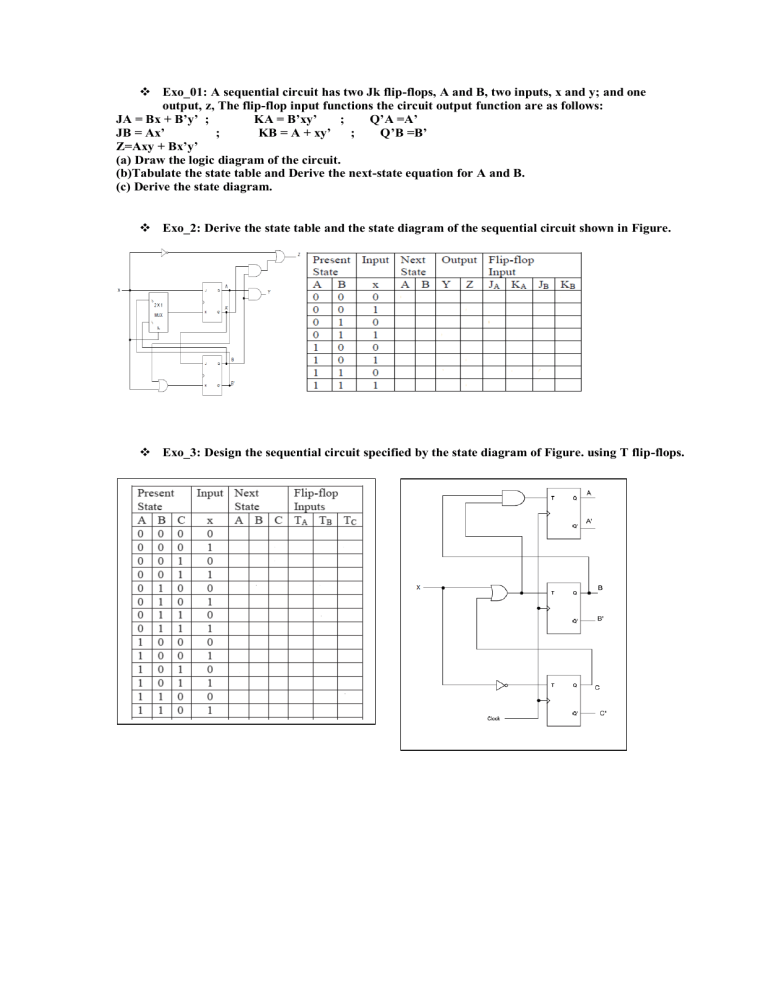A sequential circuit has two Jk flip-flops, A and B, two inputs, x and y

Exo_01: A sequential circuit has two Jk flip-flops, A and B, two inputs, x and y; and one output, z, The flip-flop input functions the circuit output function are as follows:
JA = Bx + B’y’ ; KA = B’xy’ ; Q’A =A’
JB = Ax’
Z=Axy + Bx’y’
; KB = A + xy’ ; Q’B =B’
(a) Draw the logic diagram of the circuit.
(b)Tabulate the state table and Derive the next-state equation for A and B.
(c) Derive the state diagram.
Exo_2: Derive the state table and the state diagram of the sequential circuit shown in Figure.
Exo_3: Design the sequential circuit specified by the state diagram of Figure. using T flip-flops.
Exo_4: Implement the truth table given below using
(a) A single 3-to-8 Decoder and any simple logic gate (e.g. AND/OR/INV)
(b) A single 8-to-1 Multiplexer and any simple logic gate (e.g. AND/OR/INV)
(c) A single 4-to-1 Multiplexer and any simple logic gate (e.g. AND/OR/INV)
Exo_5: Here is a sequential circuit with one input x and one output y.
(a) Derive the next state and output equations.
(b) Fill in the following characteristic table of JK-flip flop.
(c) The state table of the circuit.
(d) Draw the state diagram.
Exo_6: Convert a T flip-flop to a JK flip-flop by including input gates to the T flip flop. The gates needed for the input of the T flip flop can be determined by means of sequential circuit design procedures. The sequential circuit to be considered will have one T flip flop and two inputs, J and K.
(a) Tabulate the next-state table.
(b) Simplify the equation for T using the K-Map method.
(c) Put your answer in the form of a logic diagram .
Exo_7: A sequential circuit with D flip-flops, A and B; Two inputs, x and y; and one output, z; is specified by the following next-state and output equations:
A(t+1)= x’y + xA ; B(t+1)= x’B + xA ; z(t)=B a) Draw the logic diagram of the circuit b) Derive the state table c) Derive the state diagram
Exo_8: Design a sequential circuit with two D flip flops, and two inputs, E and x. If E =0, the circuit remains in the same state regardless of the value of x. When E = 1 and x = 1, the circuit goes through the state transitions from 00 to 01 to 10 back to 00, and repeats. When E = 1 and x = 0, the circuit goes through the state transitions from 00 to 10 to 01 back to 00, and repeats.
The circuit is to be designed by treating the unused state(s) as don’t care condition(s). The final circuit must be analyzed to ensure that it is self-correcting.


